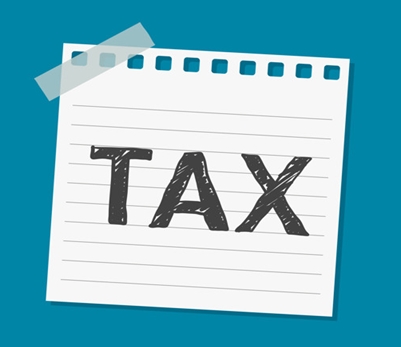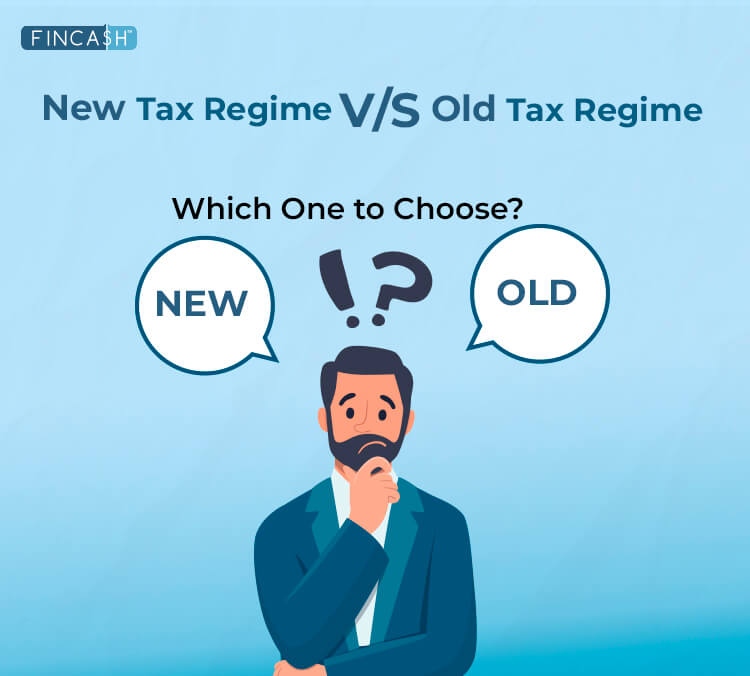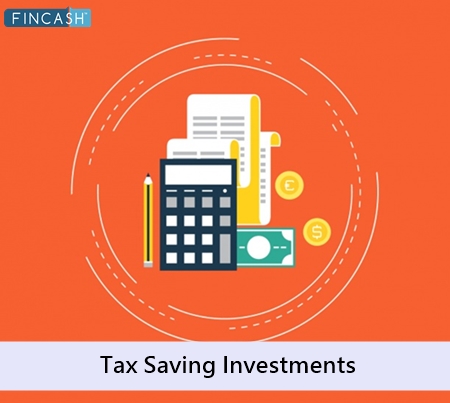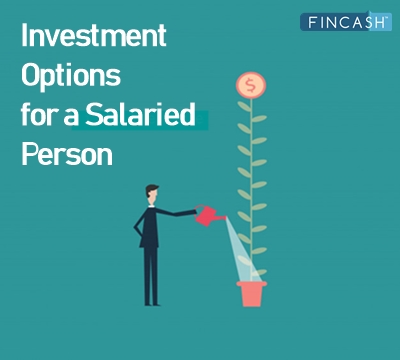Best Tax Saving Options for Salaried FY 25 - 26
Are you a salaried person? Have you started your tax planning for this year? Tax season is around the corner, and it is the time for taxpayers to think of their tax savings. If planned effectively, Tax Saving Investments can not only help us in saving taxes, but also help in achieving financial goals. There are several investment options listed below that will help you in saving your taxes as per your investment duration.

Let us look at general PAYSLIP Segmentation first before we discuss investment options.
Payslip - Section I
a. Basic Salary
This is a fixed component in your paycheck and forms the basis of other portions of your salary, hence the name. For instance, HRA is defined as a percentage (as per the company’s discretion) of this basic salary. Your PF is deducted at 12% of your basic salary. It is usually a large portion of your total salary.
b. House Rent Allowance
Salaried individuals, who live in a rented house/apartment, can claim house rent allowance or HRA to lower tax outgo. This can be partially or completely exempt from taxes. The income tax laws have prescribed a method for computing the HRA that can be claimed as an exemption.
c. Leave Travel Allowance
Salaried employees can avail exemption for a trip within India under LTA. The exemption is only for the shortest distance on a trip. This allowance can only be claimed for a trip taken with your spouse, children, and parents, but not with other relatives. This particular exemption is up to the actual expenses, therefore unless you actually take the trip and incur these expenses, you cannot claim it. Submit the bills to your employer to claim this exemption.
d. Bonus
The bonus is usually paid once or twice a year. Bonus, performance incentive, whatever may be its name, is 100% taxable. Performance bonus is usually linked to your appraisal ratings or your performance during a period and is based on the company policy.
e. Employee Contribution to Provident Fund (PF)
Provident Fund or PF is a social security initiative by the Government of India. Both employer and employee contribute a 12% equivalent of the employee’s basic salary every month toward employee’s pension and provident fund. An interest of about 8.55% from FY 2017-18 (earlier it was 8.65%) gets accrued on it. This is a retirement benefit that companies with over 20 employees must provide as per the EPF Act, 1952.
f. Standard Deduction
Standard Deduction has been reintroduced in the 2018 budget. This deduction has replaced the conveyance allowance and medical allowance. The employee can now claim a flat Rs. 40,000 deduction from the total income, thereby reducing the tax outgo.
g. Professional Tax
professional tax or tax on employment is a tax levied by a state, just like income tax which is levied by the central government. The maximum amount of professional tax that can be levied by a state is Rs 2,500. It is usually deducted by the employer and deposited with the state government. In your Income Tax Return, professional tax is allowed as a deduction from your salary income
Retirement Benefits - Section II
a. Exemption of Leave Encashment
Check with your employer about their leave encashment policy. Some employers allow you to carry forward some amount of leave days and allow you to encash them while others prefer that you finish using them in the same year itself. The amount received as compensation for leave days accumulated is referred to as leave encashment and it is taxable as salary. Exemption of leave encashment from tax: It is fully exempt for Central and State government employees. For non-government employees, the least of the following three is exempt.
- 10 months average salary preceding retirement or resignation (where average salary includes basic and DA and excludes perquisites and allowances)
- Leave encashment actually received. (this is further subject to a limit of Rs 3,00,000 for retirements after 02.04.1998)
- Amount equal to salary for the leave earned (where leave earned should not exceed 30 days for every year of service)
The amount chargeable to tax shall be the total leave encashment received minus exemption calculated as above. This is added to your income from salary.
b. Relief Under Section 89(1)
You are allowed tax relief under Section 89(1), when you have received a portion of your salary in arrears or in advance, or have received a family pension in arrears. Calculate the Tax Relief Yourself
- Calculate the tax payable on the total income, including additional salary in the year it is received.
- Calculate the tax payable on the total income, excluding additional salary in the year it is received
- Calculate the difference between Step 1 and Step 2
- Calculate the tax payable on the total income of the year to which the arrears relate, excluding arrears
- Calculate the tax payable on the total income of the year to which the arrears relate, including arrears
- Calculate the difference between Step 4 and Step 5
- The excess amount at Step 3 over Step 6 is the tax relief that shall be allowed.
Note that if the amount at Step 6 is more than the amount at Step 3, no relief shall be allowed.
c. Exemption on Receipts at the Time of Voluntary Retirement
Any compensation received on voluntary retirement or separation is exempt from tax as per the Section 10(10C). However, the following conditions must be fulfilled.
- Compensation received is towards voluntary retirement or separation
- Maximum compensation received does not exceed Rs 5,00,000.
- The recipient is an employee of an authority established under the Central or State Act, local authority, university, IIT, state government or central government, notified institute of management, or notified institute of importance throughout India or any state, PSU, company or a cooperative society.
- The receipts are in compliance with Rule 2BA.
No exemption can be claimed under this section for the same AY or any other if relief under Section 89 has been taken by an employee for compensation of voluntary retirement or separation or termination of services. Note: Exemption can only be claimed in the assessment year the compensation is received.
Pension
Pension is taxable under the head salaries in the income Tax Return. Pension is paid out periodically on a monthly basis usually. You may also choose to take pension as a lump sum (also called commuted pension) instead of a periodical payment. At the time of retirement, you may choose to receive a certain percentage of your pension in advance.
Such pension received in advance is called commuted pension.
Uncommuted pension or any periodical payment of pension is fully taxable as salary.
Commuted and Uncommuted Pension Commuted pension or lump sum received may be exempt in certain cases. For a government employee, commuted pension is fully exempt. Uncommuted pension or any periodical payment of pension is fully taxable as salary.
Pension received by a family member though is taxed under income from other sources in the income tax return. If this pension is commuted or is a lump sum payment it is not taxable. Uncommuted pension received by a family member is exempt to a certain extent. Rs 15,000 or 1/3rd of the uncommuted pension received – whichever is less is exempt from tax.
Pension that is received from UNO by its employees or their family is exempt from tax. Pension received by family members of Armed Forces is also exempt.
Gratuity
Gratuity is a retirement benefit that employers provide for their employees. The employee is entitled to receive gratuity when he completes five years of service at that company. It is, however, only paid on retirement or resignation. Gratuity received on retirement or death by a central, state or local government employee is fully exempt from tax for the employee or his family. The tax treatment of your gratuity is different, depending on whether your employer is covered by the Payment of Gratuity Act. Check with your company about its status, and then proceed to calculate.
Payslip - Section III - Basics of Income Tax
a. Income Chargeable to Tax
Your income is not equal to your salary. You could earn income from several other sources other than your salary income. Your total income, according to the Income Tax Department, could be from house property, profit or loss from selling stocks or from interest on a Savings Account or on fixed deposits. All these numbers get added up to become your gross income.
b. Tax Rates
Add up all your income from the heads listed above. This is your gross total income. From your gross total income, deductions under Section 80 are allowed to be claimed. The resulting number is the income on which you have to pay tax.
Latest Budget 2020
Finance Minister Nirmala Sitharaman has presented the Union Budget 2020 intending to increase income and boost purchasing power. As per her speech, a new slab has been restructured from INR 5 lakh onward.
You can check out the difference in slabs before and after the Union Budget 2020:
| Tax Slab | FY 25 - 26 FY 24 - 25 Tax Rate | Tax Slab | FY 16-17 Tax Rate |
|---|---|---|---|
| Up to Rs 2,50,000 | No tax | Up to Rs 2,50,000 | No tax |
| Rs 2,50,000 – Rs 5,00,000 | 5% | Rs 2,50,000 – Rs 5,00,000 | 10% |
| Rs 5,00,000 – Rs 10,00,000 | 20% | Rs 5,00,000 – Rs 10,00,000 | 20% |
| Rs 10,00,000 and beyond | 30% | Rs 10,00,000 and beyond | 30% |
Note: The proposed slabs in the Union Budget 2020 are purely optional. It is up to the taxpayers to choose the old tax slabs or the new one. To make an opinion on the changes made, you need to do your tax calculations carefully and see which helps you save more.
c. TDS on Salary
TDS is tax deducted at source. Your employer deducts a portion of your salary every month and pays it to the Income Tax Department on your behalf. Based on your total salary for the whole year and your investments in tax-saving products, your employer determines how much TDS has to be deducted from your salary each month. For a salaried employee, TDS forms a major portion of an employee’s income tax payment. Your employer will provide you with a TDS certificate called Form 16 typically around June or July showing you how much tax was deducted each month. Understand your Form 16 better here. Your bank may also deduct tax at source when you earn interest from a Fixed Deposit. The bank deducts TDS at 10% on FDs usually. A 20% TDS is deducted when the bank does not have your PAN information.
d. Form 16
Form 16 is a TDS certificate. Income Tax Department mandates all employers to deduct TDS on Salary and deposit it with the government. The Form 16 certificate contains details about the salary you have earned during the year and the TDS amount deducted. It has two parts – Part A with details about the employer and employee name, address, PAN and TAN details and TDS deductions. Part B includes details of salary paid, other incomes, deductions allowed, tax payable.
e. Form 26AS
Form 26AS is a summary of taxes deducted on your behalf and taxes paid by you. This is provided by the Income Tax Department. It shows details of tax deducted on your behalf by deductors, details on tax deposited by taxpayers and tax refund received in the financial year. This form can be accessed from the IT Department’s website.
e. Deductions
The lower your taxable income, the lower taxes you ought to pay. So be sure to claim all the tax deductions and benefits that apply to you. Section 80C of the Income Tax Act can reduce your gross income by Rs 1.5 lakhs. There are a bunch of other deductions under Section 80 such as 80D, 80E, 80GG, 80U etc. that reduce your tax liability.
Talk to our investment specialist
Tax Saving Options Under Section 80C
A Salaried person can save upto 1.5 Lakhs rupees as per section 80c of income tax in the following intruments of his/her choice.
1. Equity Linked Savings Scheme (ELSS)
There are some Mutual Fund schemes specially created to offer you tax savings and these are called ELSS or Equity Linked Savings Scheme. The investments that you make in ELSS are eligible for deduction under Section 80C. As, ELSS are equity-linked it has the potential of earning higher returns compared to other tax-saving investments, but this means that it comes with higher risk. There is no limit on the amount that can be invested in any of this schemes, but the tax benefit is available only for INR 1.5 lakh. ELSS comes with a lock-in period of 3 years and it is the lowest among all the tax options available under section 80C.
Top 10 Tax Saving ELSS Mutual Funds based on best 5Year CAGR returns.
Fund NAV Net Assets (Cr) 3 MO (%) 6 MO (%) 1 YR (%) 3 YR (%) 5 YR (%) 2024 (%) HDFC Tax Saver Fund Growth ₹1,466.19
↑ 6.53 ₹17,194 3.8 6.2 7.4 20.1 23 21.3 SBI Magnum Tax Gain Fund Growth ₹449.664
↑ 0.89 ₹31,783 4.1 3.9 2.1 22.3 22.7 27.7 Motilal Oswal Long Term Equity Fund Growth ₹50.3409
↓ -0.01 ₹4,515 -0.8 -3.4 -9.6 21.5 21.1 47.7 DSP Tax Saver Fund Growth ₹144.619
↑ 0.77 ₹17,241 6.3 4.7 3.2 18.8 20.5 23.9 Bandhan Tax Advantage (ELSS) Fund Growth ₹158.647
↑ 0.82 ₹7,215 5.6 6.1 3.7 15 20.3 13.1 Nippon India Tax Saver Fund (ELSS) Growth ₹131.598
↑ 0.39 ₹15,513 3.9 3.3 1.7 16.2 20.1 17.6 Franklin India Taxshield Growth ₹1,507.76
↑ 7.61 ₹6,788 3.8 2.3 0.1 16.9 19.6 22.4 JM Tax Gain Fund Growth ₹50.4658
↑ 0.07 ₹224 3.8 6.7 0 19.1 19.4 29 Mirae Asset Tax Saver Fund Growth ₹51.108
↑ 0.23 ₹27,069 5.3 6.8 5.2 16.3 18.2 17.2 BOI AXA Tax Advantage Fund Growth ₹159.47
↑ 0.02 ₹1,417 1.8 -0.6 -8.9 15.2 18.1 21.6 Note: Returns up to 1 year are on absolute basis & more than 1 year are on CAGR basis. as on 5 Dec 25 Research Highlights & Commentary of 10 Funds showcased
Commentary HDFC Tax Saver Fund SBI Magnum Tax Gain Fund Motilal Oswal Long Term Equity Fund DSP Tax Saver Fund Bandhan Tax Advantage (ELSS) Fund Nippon India Tax Saver Fund (ELSS) Franklin India Taxshield JM Tax Gain Fund Mirae Asset Tax Saver Fund BOI AXA Tax Advantage Fund Point 1 Upper mid AUM (₹17,194 Cr). Highest AUM (₹31,783 Cr). Bottom quartile AUM (₹4,515 Cr). Upper mid AUM (₹17,241 Cr). Lower mid AUM (₹7,215 Cr). Upper mid AUM (₹15,513 Cr). Lower mid AUM (₹6,788 Cr). Bottom quartile AUM (₹224 Cr). Top quartile AUM (₹27,069 Cr). Bottom quartile AUM (₹1,417 Cr). Point 2 Oldest track record among peers (29 yrs). Established history (18+ yrs). Established history (10+ yrs). Established history (18+ yrs). Established history (16+ yrs). Established history (20+ yrs). Established history (26+ yrs). Established history (17+ yrs). Established history (9+ yrs). Established history (16+ yrs). Point 3 Rating: 2★ (lower mid). Rating: 2★ (lower mid). Not Rated. Rating: 4★ (top quartile). Top rated. Rating: 3★ (upper mid). Rating: 2★ (bottom quartile). Rating: 3★ (upper mid). Not Rated. Rating: 3★ (upper mid). Point 4 Risk profile: Moderately High. Risk profile: Moderately High. Risk profile: Moderately High. Risk profile: Moderately High. Risk profile: Moderately High. Risk profile: Moderately High. Risk profile: Moderately High. Risk profile: Moderately High. Risk profile: Moderately High. Risk profile: Moderately High. Point 5 5Y return: 23.04% (top quartile). 5Y return: 22.68% (top quartile). 5Y return: 21.13% (upper mid). 5Y return: 20.49% (upper mid). 5Y return: 20.29% (upper mid). 5Y return: 20.10% (lower mid). 5Y return: 19.62% (lower mid). 5Y return: 19.37% (bottom quartile). 5Y return: 18.19% (bottom quartile). 5Y return: 18.14% (bottom quartile). Point 6 3Y return: 20.12% (upper mid). 3Y return: 22.27% (top quartile). 3Y return: 21.45% (top quartile). 3Y return: 18.81% (upper mid). 3Y return: 14.98% (bottom quartile). 3Y return: 16.22% (bottom quartile). 3Y return: 16.89% (lower mid). 3Y return: 19.12% (upper mid). 3Y return: 16.28% (lower mid). 3Y return: 15.16% (bottom quartile). Point 7 1Y return: 7.41% (top quartile). 1Y return: 2.10% (upper mid). 1Y return: -9.60% (bottom quartile). 1Y return: 3.24% (upper mid). 1Y return: 3.74% (upper mid). 1Y return: 1.69% (lower mid). 1Y return: 0.14% (lower mid). 1Y return: -0.02% (bottom quartile). 1Y return: 5.23% (top quartile). 1Y return: -8.91% (bottom quartile). Point 8 Alpha: 2.58 (top quartile). Alpha: -2.21 (lower mid). Alpha: -2.71 (bottom quartile). Alpha: -2.28 (lower mid). Alpha: -1.66 (upper mid). Alpha: -1.25 (upper mid). Alpha: -1.98 (upper mid). Alpha: -3.62 (bottom quartile). Alpha: 2.78 (top quartile). Alpha: -7.70 (bottom quartile). Point 9 Sharpe: 0.25 (top quartile). Sharpe: -0.18 (bottom quartile). Sharpe: -0.08 (upper mid). Sharpe: -0.15 (lower mid). Sharpe: -0.14 (lower mid). Sharpe: -0.06 (upper mid). Sharpe: -0.12 (upper mid). Sharpe: -0.23 (bottom quartile). Sharpe: 0.22 (top quartile). Sharpe: -0.37 (bottom quartile). Point 10 Information ratio: 1.38 (top quartile). Information ratio: 1.86 (top quartile). Information ratio: 0.75 (upper mid). Information ratio: 0.80 (upper mid). Information ratio: -0.27 (bottom quartile). Information ratio: 0.49 (bottom quartile). Information ratio: 0.58 (lower mid). Information ratio: 0.71 (upper mid). Information ratio: 0.51 (lower mid). Information ratio: 0.10 (bottom quartile). HDFC Tax Saver Fund
SBI Magnum Tax Gain Fund
Motilal Oswal Long Term Equity Fund
DSP Tax Saver Fund
Bandhan Tax Advantage (ELSS) Fund
Nippon India Tax Saver Fund (ELSS)
Franklin India Taxshield
JM Tax Gain Fund
Mirae Asset Tax Saver Fund
BOI AXA Tax Advantage Fund
2. Employees' Provident Fund (PF) & Voluntary Provident Fund (VPF)
In Employee Provident Fund (also known as PF), a part of your salary is deducted monthly, which includes 12% of your basic salary. The employer also contributes the similar percentage of which 3.7% goes to the EPF and the remaining 8.3% goes towards the pension fund. The total amount deducted annually can be claimed by you as deduction while computing your total taxable income. However, you must check with your employer how much interest is earned on the corpus during the financial year. Interest earned above the limit of 9.5 per cent is taxable in the hands of the employee. Similarly, if the contribution by your employer is more than 12 per cent of your salary, then the excess is taxable in your hands.
An employee can increase this contribution if he is willing to get a less take-home salary. This additional contribution is called VPF and is also eligible for deduction under Section 80C. The rules for both EPF and VPF are the same.
3. Public Provident Fund (PPF)
PPF is a scheme provided by the government and the investment in it is eligible for deduction under Section 80C. You can invest as low as INR 500 and as high as INR 1.5 lakh in a financial year. The maturity period of this fund is 15 years and the interest on PPF is currently tax-free (compounded yearly). The interest rate in PPF is assured, but not fixed. The rate is subject to revision every quarter. Government has reduced the interest rate by 0.2 per cent. The interest rate effective for January-March 2018 quarter is 7.6 per cent.
4. Life Insurance Premiums
Any amount that you pay towards Life Insurance premium for yourself, your spouse or your children can also be included in Section 80C deduction. Please note that the premium paid by you for your parents (father/ mother/ both) or your in-laws is not eligible for deduction under Section 80C. If you are paying premium for more than one insurance policy, all the premiums can be included. It is not necessary to have the insurance policy from Life Insurance Corporation (LIC), even insurance bought from private players (registered under Insurance Regulatory and Development Authority of India or IRDAI) are be considered here.
Apart from individuals if a hindu undivided family (HUF) buys a life insurance for its member, then it can claim tax deduction on the premium paid.
5. National Savings Certificate (NSC)
National Saving Certificate (NSC) is considered to be a good Tax Saving Scheme to invest in. NSC interest rates are set in the month of April every year. The current interest rate of NSC is 7.6% p.a. The maturity period of this scheme is of 5 years. A person can purchase an NSC for as low as INR 100 with no limit on the investment amount. Any investments in NSC are eligible for deduction under Section 80C. The interest earned every year, except the last one, is tax-free.
You can invest in NSC through your local post office as well.
6. Infrastructure Bonds
Also popularly called Infra Bonds, these were issued by infrastructure companies in FY2010-11, and FY2011-12 after getting permission from the government. However, these are not available now as the income tax provision allowing investment in these to be deducted from gross taxable income was not available after FY 2012-13. Investment of up to INR 20,000 in these bonds was eligible for deduction from gross taxable income under Section 80CCF and this deduction was in addition to the deduction allowed under section 80C.
7. Five-year Bank Fixed Deposits (FDs)
Any term deposit with a tenure of at least five years with a scheduled bank also qualifies for deduction under section 80C and the interest earned on it is taxable. However, while investing for FY 2017-18, one must keep in mind that the interest rates have come down drastically as compared to previous years.
Five-year Post Office Time Deposit (POTD) Scheme
POTDs are similar to bank fixed deposits. They are available for different time durations like one, two, three and five years but only five-year POTD qualifies for tax-saving under section 80C. The interest on these is compounded quarterly, but paid annually. Currently, they are offering 6.9 per cent a year as decided by the government for January-March. The interest rate is reviewed by the government every quarter. The interest earned is entirely taxable.
8. Contributions to National Pension System (NPS)
Any contribution made by an individual (whether employed or not) to the National Pension Scheme is also allowed as deduction to the individual under Section 80CCD. Also note that the combined deduction under section 80C and 80CCD cannot exceed INR 1.5 lakh. However, if one contributes an additional INR 50,000 to NPS (over and above the combined limit of INR 1.5 lakh) it can be claimed as deduction under section 80CCD(1B) i.e. total deduction that can be claimed for contributions to NPS is INR 1.5 lakh plus INR 50,000 under two different sections of the Income Tax Act.
Any contributions made to the APY (Atal Pension Yojana) scheme are also eligible for tax deduction under section 80CCD. Therefore, additional NPS and APY contributions can offer you maximum tax deduction of INR 50,000.
9. NABARD Rural Bonds
The bonds issued by NABARD (National Bank for Agriculture and Rural Development) also qualify for deduction under section 80C. However, the availability of these bonds for investment depends on the government notifying the same. In recent years, these have not been available for section 80C investment.
10. Unit linked Insurance Plan (ULIP)
An insurance product which covers life insurance and also provides the benefits of equity investments, Ulips offer life cover, tax-saving and also help you grow your money over the long-term. However, unlike PF or ELSS, higher charges are associated with investment in ULIPs due to the life cover element. Also, there are certain conditions associated with ULIPs as it is a life insurance policy as compared to other tax savers.
11. Home Loan Principal Repayment
The equated monthly installment (EMI) that you pay to repay your home loan consists of two components - Principal and Interest. The principal qualifies for deduction under Section 80C. Even the interest can save you significant income tax, but that would be under Section 24 and section 80EE of the Income Tax Act.
So if you have an outstanding home loan in your name, then the repayment of the principal amount made by you in a financial year can be claimed as deduction under Section 80C and you need not invest in other tax-saving products only to avail tax benefits, if the Section 80C limit is fully utilised in home loan repayment.
Further, any payment made to development authorities like Delhi Development Authority (DDA) in order to purchase a house (which has been allotted to you in a scheme made in this regard) also qualifies as deduction under section 80C.
12. Sukanya Samriddhi Account
This scheme is specially formulated for investments to be made for a girl child by her parents or guardians. Any amount deposited in this account would be eligible for deduction under Section 80C. Liable for tax saving under section 80C, Sukanya Samriddhi Yojana account matures after 21 years. Further, this account can be opened for a maximum of two girls and in case of twins this facility will be extended to the third child as well. The minimum annual deposit is INR 1,000, which can go up to INR 1,50,000. Interest rate on new deposits is subject to revision every quarter. The government has revised the interest on the scheme to 8.1 per cent for the quarter January-March 2018.
13. Senior Citizen Savings Scheme 2004 (SCSS)
This scheme is formulated only for the senior citizens, the ones who are above 60 years or have opted for retirement at 55 years of age. The maximum SCSS investment liable for tax exemption is INR 1,50,000 and the current interest rate is 8.3% p.a. The interest is payable quarterly instead of compounded quarterly. Thus, unclaimed interest on these deposits won't earn any further interest and also the interest earned is subject to tax. Kindly note that the interest on this scheme is reset every quarter by the government for new accounts opened in under SCSS.
As per the new rules effective from October 3, 2017, retired defence personnel can invest in this scheme only if he is 50 years of age.
14. Payment of Tuition Fees
Paying your kids' school fees is an expenditure which can't be ignored. Now imagine that the amount paid by you as Tuition Fees (excluding development fee of donation amount), whether at the time of admission or thereafter, is eligible as deduction to you and will help you save tax.
Please note that the fees should be paid to a school, college, or university in India only.
All efforts have been made to ensure the information provided here is accurate. However, no guarantees are made regarding correctness of data. Please verify with scheme information document before making any investment.












Nice Description of Pay slip and the choices on can make to save income tax on salary.